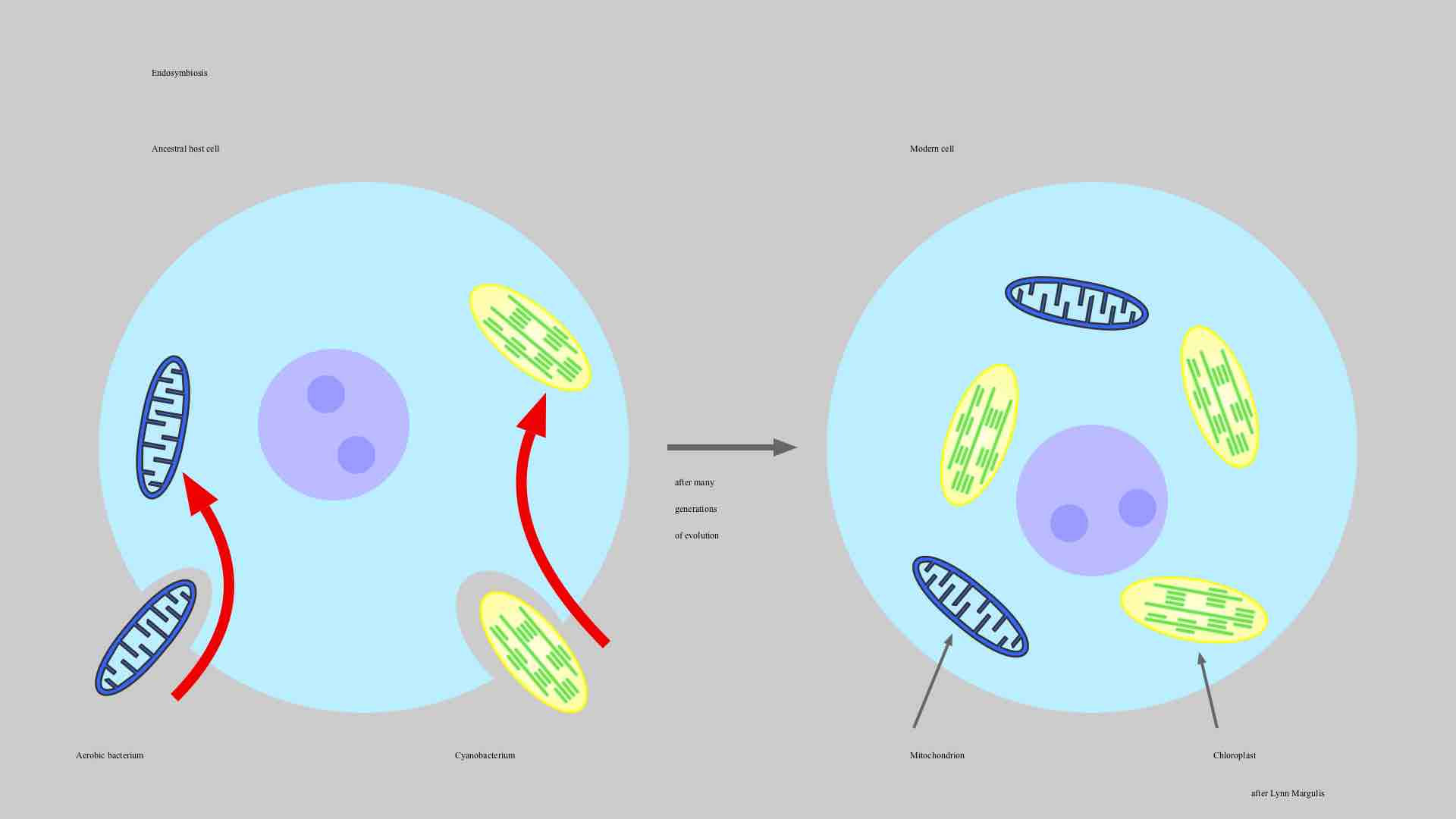Endosymbiosis and the Evolution of Eukaryotes
To fully understand eukaryotic organisms, it is necessary to understand that all extant eukaryotes are descendants of a chimeric organism that was a composite of a host cell and the cell(s) of an alpha-proteobacterium that "took up residence" inside the host. This major theme in the origin of eukaryotes is known as endosymbiosis, where one cell engulfs another such that the engulfed cell survives and both cells benefit . Over many generations, a symbiotic relationship can result in two organisms that depend on each other so completely that neither could survive on its own. Endosymbiotic events probably contributed to the origin of the last common ancestor (LCA) of today's eukaryotes.

Endosymbiosis
Modern eukaryotic cells evolved from more primitive cells that engulfed bacteria with useful properties, such as energy production. Combined, the once-independent organisms flourished and evolved into a single organism.
Endosymbiotic Theory
The endosymbiotic theory was first articulated by the Russian botanist Konstantin Mereschkowski in 1905. Mereschkowski was familiar with work by botanist Andreas Schimper, who had observed in 1883 that the division of chloroplasts in green plants closely resembled that of free-living cyanobacteria. Schimper had tentatively proposed that green plants arose from a symbiotic union of two organisms. Ivan Wallin extended the idea of an endosymbiotic origin to mitochondria in the 1920s. These theories were initially dismissed or ignored. More detailed electron microscopic comparisons between cyanobacteria and chloroplasts combined with the discovery that plastids (organelles associated with photosynthesis) and mitochondria contain their own DNA led to a resurrection of the idea in the 1960s. The endosymbiotic theory was advanced and substantiated with microbiological evidence by Lynn Margulis in 1967 .
Chloroplasts in plants
A eukaryote with mitochondria engulfed a cyanobacterium in an event of serial primary endosymbiosis, creating a lineage of cells with both organelles. These cyanobacteria have become chloroplasts in modern plant cells. The cyanobacterial endosymbiont already had a double membrane.
In 1981 she argued that eukaryotic cells originated as communities of interacting entities, including endosymbiotic spirochetes that developed into eukaryotic flagella and cilia. This last idea has not received much acceptance because flagella lack DNA and do not show ultrastructural similarities to bacteria or archaea. According to Margulis and Dorion Sagan, "Life did not take over the globe by combat, but by networking" (i.e., by cooperation). The possibility that the peroxisome organelles may have an endosymbiotic origin has also been considered, although they lack DNA. Christian de Duve proposed that they may have been the first endosymbionts, allowing cells to withstand growing amounts of free molecular oxygen in the earth's atmosphere. However, it now appears that they may be formed de novo, contradicting the idea that they have a symbiotic origin.
It is believed that over millennia these endosymbionts transferred some of their own DNA to the host cell's nucleus during the evolutionary transition from a symbiotic community to an instituted eukaryotic cell (called "serial endosymbiosis"). This hypothesis is thought to be possible because it is known today from scientific observation that transfer of DNA occurs between bacteria species, even if they are not closely related. Bacteria can take up DNA from their surroundings and have a limited ability to incorporate it into their own genome.